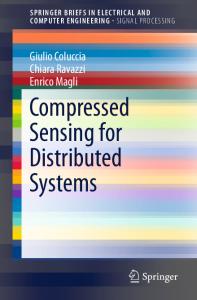Monolithic Liquid Chemical Sensing Systems
- PDF / 1,817,875 Bytes
- 10 Pages / 612 x 792 pts (letter) Page_size
- 3 Downloads / 281 Views
D3.3.1
Monolithic Liquid Chemical Sensing Systems Steven M. Martin1,2, Timothy D. Strong1,3, and Richard B. Brown1,4 1 University of Michigan, Ann Arbor, MI 48105, USA 2 Sonetics Ultrasound, Ann Arbor, MI 48103, USA 3 Sensicore, Ann Arbor, MI 48108, USA 4 University of Utah, Salt Lake City, UT 84112, USA ABSTRACT The miniaturization of electrochemical transducers is crucial for the development of implantable biosensors, wearable microdetectors, and remote sensing networks due to the small dimensions required in these applications. As sensors scale, the analytical response degrades and integrated instrumentation is required to maintain acceptable detection limits. This work details the development of CMOS-integrated liquid chemical sensors. The sensors were cost-effectively post-processed on top of foundry-fabricated CMOS electronics using thin-film techniques. CMOS-integrated voltammetric sensors demonstrated a 25x improvement in detection limit/electrode area versus passive sensors. CMOS-integrated, ion-selective electrodes demonstrated a 50x improvement in lifetime and a 200x improvement in response time versus passive sensors. With their improved performance, these smart sensors can be used in a wide range of applications and can additionally serve as enabling technologies for more complex, chip-scale systems. INTRODUCTION By integrating electrochemical sensors and signal conditioning circuitry onto a monolithic substrate, the sensor’s minimum detectable signal can approach theoretical noise limits since the integrated amplifiers and impedance transformation circuits reduce the ambient noise coupled into the system. Additionally, these monolithic microsystems can extend the sensor’s lifetime, improve linearity, and enable dimensional scaling. Thus, integration facilitates the application of these microsystems to environmental monitors, portable handheld instruments, and implantable devices. The fabrication costs of these systems, however, have remained a concern as many integrated systems require custom CMOS fabrication technologies [1,2]. In this work, we discuss the development of a cost-effective fabrication technology where the electrochemical sensors are post-processed on top of foundry-fabricated CMOS substrates. Two chemical microinstruments developed using these techniques are described and results from their characterization are given. These devices are also compared with passive transducers. Two types of electrochemical sensors are discussed in this work. The first group of sensors is amperometric or voltammetric sensors. When a potential is placed on an amperometric sensor, a faradaic reaction will occur if the voltage exceeds the standard potential of a solution constituent. This creates a current that is proportional to the concentration of that analyte. By employing a continuously varying applied potential, an amperometric sensor can be used in a voltammetric configuration. A full description of amperometric and voltammetric sensors is beyond the scope of this work, but the interested reader is dir
Data Loading...










